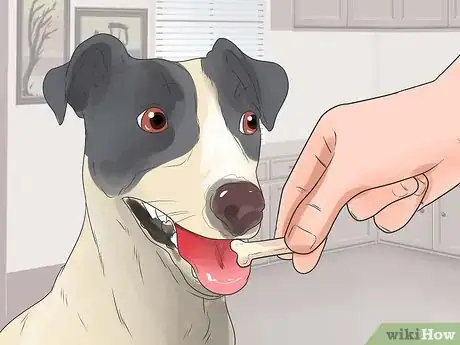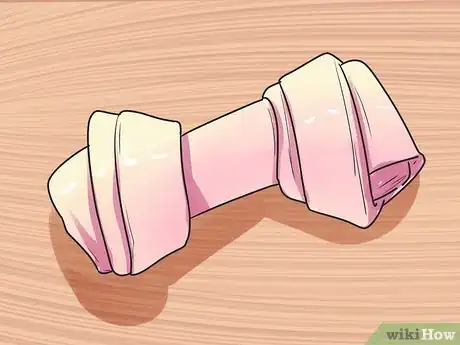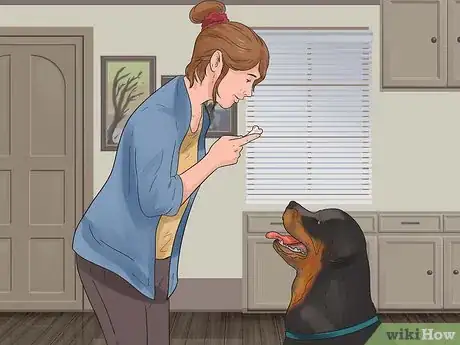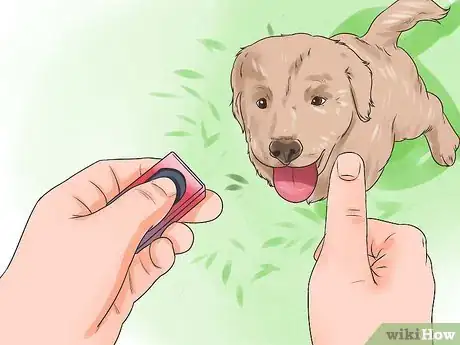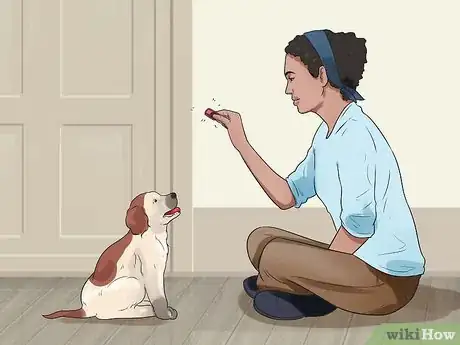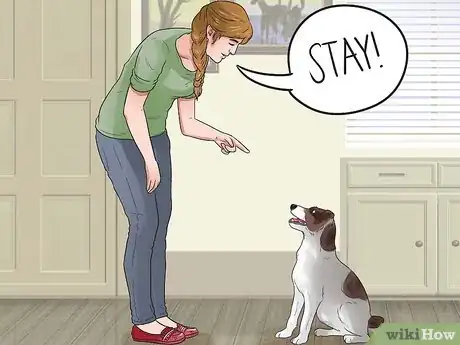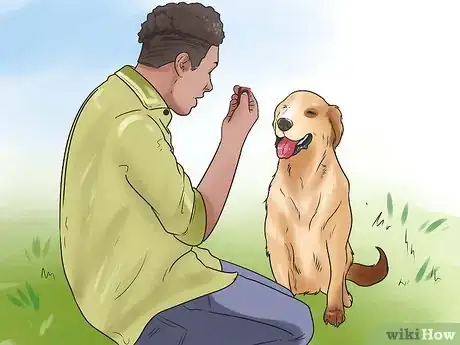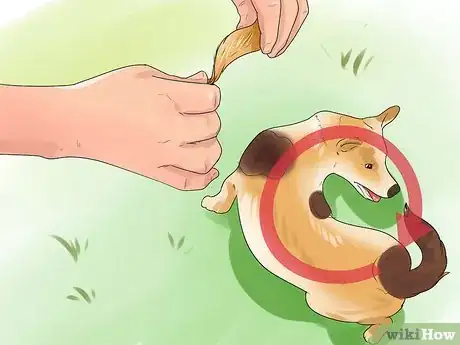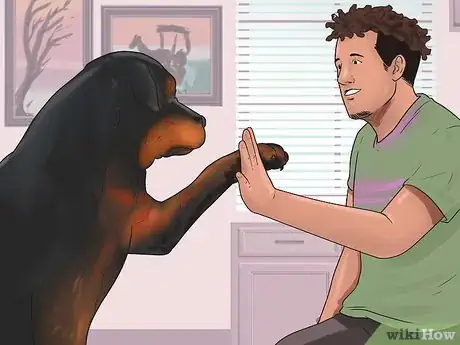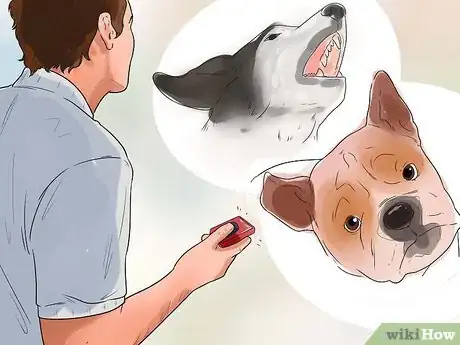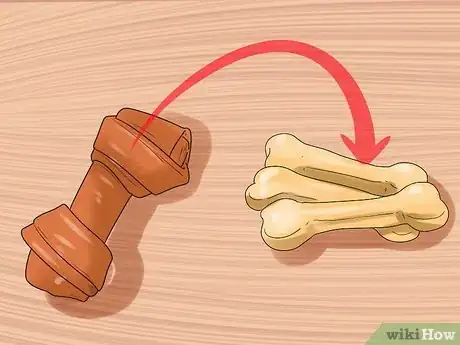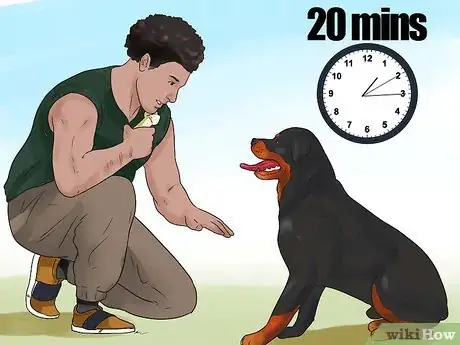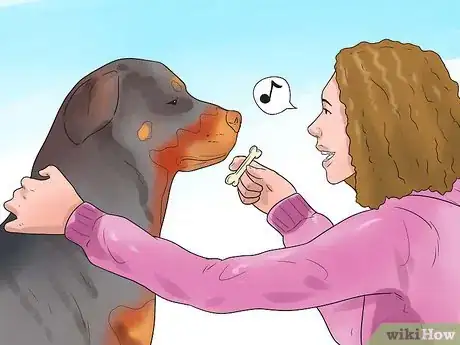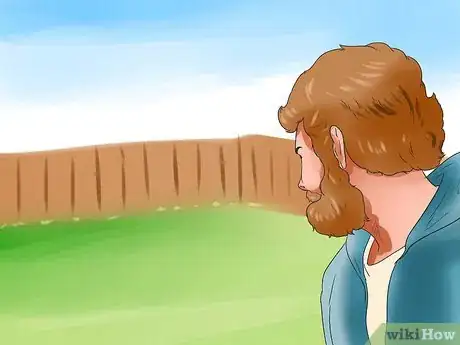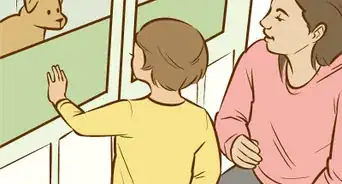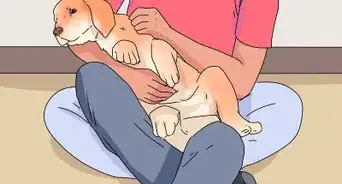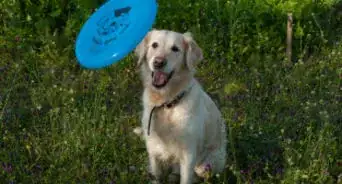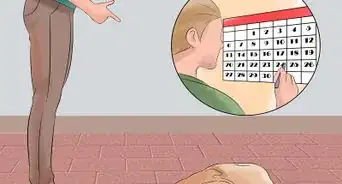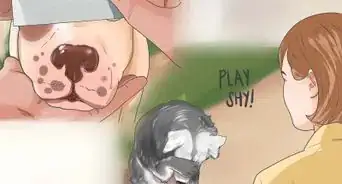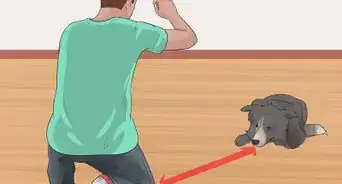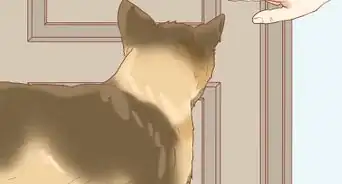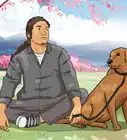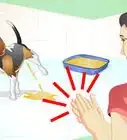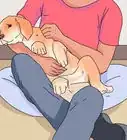This article was co-authored by Brian Bourquin, DVM. Brian Bourquin, better known as “Dr. B” to his clients, is a Veterinarian and the Owner of Boston Veterinary Clinic, a pet health care and veterinary clinic with three locations, South End/Bay Village, the Seaport, and Brookline, Massachusetts. Boston Veterinary Clinic specializes in primary veterinary care, including wellness and preventative care, sick and emergency care, soft-tissue surgery, dentistry. The clinic also provides specialty services in behavior, nutrition, and alternative pain management therapies using acupuncture, and therapeutic laser treatments. Boston Veterinary Clinic is an AAHA (American Animal Hospital Association) accredited hospital and Boston’s first Fear Free Certified Clinic. Brian has over 19 years of veterinary experience and earned his Doctor of Veterinary Medicine from Cornell University.
This article has been viewed 262,031 times.
Teaching your dog to do tricks is a fun extension of basic obedience training. Indeed, similar principles apply to teaching tricks. Dogs thrive on the one-to-one attention they get from an owner during training sessions, and they also benefit from the mental stimulation. If you want to teach your dog some basic tricks or something more advanced, learn about reward based training and get started.
Steps
Getting Started with Reward Based Training
-
1Focus on reward-based training. Reward based training uses treats, praise, toys, and play as motivators to teach your dog new behaviors. This method of training teaches your dog that if he does what you want then he gets a reward. Reward based training is the best way to teach your dog new things because it is effective, simple, and it enhances your relationship.[1]
- Do not use punishment as a training method. Older methods of obedience training rely on harsh treatment to train new behaviors, such as yanking on a choke chain. In this type of training, dogs behave out of fear, rather than making new connections between rewards and behaviors. Punishment based training is not advised because it can lead to other problems, such as anxiety and a poor relationship between you and your dog.[2]
-
2Identify your dog’s ideal reward. Reward based training works best if you know what motivates your dog. Common rewards include tiny pieces of food and special dog treats, but you can also use praise or reward your dog with a game or a special toy.[3]
- Using reward-based training is simple. When the dog performs an action that you wish him to repeat, then acknowledge the good behavior and give your dog his treat right away.
Advertisement -
3Reward your dog immediately. The timing of the reward is crucial because it helps your dog understand what behavior is being rewarded. Therefore, it is important to give your dog his reward at the exact same moment that your dog performs the desired behavior.
- For example, when teaching a dog to sit, you should give the reward as soon as his behind touches the ground. This will ensure that he knows he is being rewarded for sitting down.[4]
-
4Use a clicker to mark good behavior. A popular way to mark good behavior is to use a clicker. When the dog is learning a new action, the clicker works better than offering praise or a treat. Dogs are used to hearing us talk, so he may not associate your talking with his action. However, the clicker is a novel sound that your dog will hear only during training sessions, so it will help him know what he is supposed to do.[5]
- To use a clicker, you will first need to train your dog to understand that the click-clack sound means a reward is on the way. You can do this by clicking the clicker and then giving your dog a food reward at the same time. Do this several times and your dog will begin to understand that the clicking sound means a treat is on the way.
-
5Teach your dog to associate the clicker with a command. Use the clicker to get your dog to associate the sound of the clicker with commands as well. Command your dog to sit and click the clicker at the same time that you say sit. Repeat this exercise a few times to reinforce the connection between the clicker and the sit command.[6]
- Always choose brief command words, preferably with a harsh first syllable such as "Sit" or "Stay". This is because only listen to the first one or two syllables and a harsh sound is easier to hear than a soft one.
Teaching Specific Tricks
-
1Consider establishing basic commands first. It is helpful to have a solid foundation of "Sit", "Stay", and "Come", before moving onto tricks, but it is not absolutely necessary. If you have a young puppy or just want to have fun, then don't be afraid to try some tricks.
-
2Teach your dog to yawn. To teach your dog to yawn, carry a clicker and treats with you at all times. Watch your dog like a hawk and when he yawns of his own accord, immediately click when he is in mid yawn. Then, let him finish yawning and reward him. Try to catch your dog yawning as often as you can and mark and reward the behavior. After a few times, start to label the behavior as "Yawn.” Soon your dog will understand the connection and will begin to yawn on command.
-
3Teach your dog to spin in a circle. A more complex trick that you can teach your dog is spinning in a circle. Training your dog to do this trick requires using a bit of wet food to get him to perform the desired action. Then you will need to reward the action and pair it with the command "spin."
- First smear a bit of tasty dog food on the tip of his tail. When he reaches around to lick his tail, click to mark the correct action of turning to one side.
- Continue to reward him for reaching around to his tail and mark/reward the behavior. After a few times, begin to name the behavior as “spin.”
- As you continue to train this behavior, your dog should start turning to continue to be rewarded. After a while, the turning will evolve into a full spin.
-
4Get your dog to do a high five. Training your dog to do a high five is simple. Wait for your dog to lift a paw, then click the clicker to mark the behavior. Then give him a reward. If your dog seldom lifts his paw, then you can gently lift his paw and click to show him that this is a good thing to do.
-
5Train your dog to speak and be quiet. Knock on the door or do another similar action that might trigger your dog to bark. Then, click the clicker to mark the barking and reward him as well. After a few times of repeating the action, start saying "speak" along with the clicker, so that he knows what he's expected to do.
- The Speak command goes hand-in-hand with "quiet." Once you have trained your dog to bark on command, you can also teach him to be silent. To do this ask him to speak, then click and reward him. While he is eating the treat and being silent, click to mark the quiet, and then give him another reward. Then, start to label the action as "quiet.” By teaching “speak” and “quiet” together, you can control when your dog barks and when he is silent.
Ensuring Successful Training Sessions
-
1Change up rewards now and then. Once your dog has learned a command, start to make the rewards a bit unpredictable to keep him motivated. You can do this by rewarding every fourth or fifth time that your dog performs the desired behavior rather than every time. Changing up your dog’s rewards will help to prevent your dog from taking his rewards for granted. It will also help to keep his focus on working to earn a reward.[7]
-
2Train often with short sessions. Remember to train often for short periods of time. Each dog has his own concentration span, so work within your dog’s abilities. Your dog may only have enough attention for five minutes of training or he may be able to train for 20 minutes. If your dog starts to lose concentration or starts to make mistakes, then end the session.[8]
-
3End on a high note. To help keep our dog motivated and happy, always try to end on a high note by asking your dog to do something simple at the end of your training session. For example, you can ask your dog to perform one of the tricks he has mastered, such as sit or speak. Make sure that you reward your dog with lots of praise and a treat to let him know he is doing a good job.[9]
-
4Train in a quiet environment free from distractions when starting out. It is helpful to start training your dog in quiet locations where he will not be distracted. Stick to a quiet, distraction-free place until your dog has mastered the trick. Once your dog gets the idea, you can begin to vary your location to reinforce the trick even more.[10]
- It is important to use different locations so that your dog knows the commands apply wherever he is. For example, if you always ask your dog to “spin” in the kitchen, he may begin to associate spinning in a circle with standing in front of the fridge.
Expert Q&A
-
QuestionWhen should you start teaching your dog tricks?
 Pippa Elliott, MRCVSDr. Elliott, BVMS, MRCVS is a veterinarian with over 30 years of experience in veterinary surgery and companion animal practice. She graduated from the University of Glasgow in 1987 with a degree in veterinary medicine and surgery. She has worked at the same animal clinic in her hometown for over 20 years.
Pippa Elliott, MRCVSDr. Elliott, BVMS, MRCVS is a veterinarian with over 30 years of experience in veterinary surgery and companion animal practice. She graduated from the University of Glasgow in 1987 with a degree in veterinary medicine and surgery. She has worked at the same animal clinic in her hometown for over 20 years.
Veterinarian Puppies are able to start learning from around 8 - 10 weeks of age. Although their attention span is short at this time, training little and often is a good idea. Certainly it's fine to start teaching tricks from 12 - 16 weeks onward, while the pup's brain is still developing and they learn quickly.
Puppies are able to start learning from around 8 - 10 weeks of age. Although their attention span is short at this time, training little and often is a good idea. Certainly it's fine to start teaching tricks from 12 - 16 weeks onward, while the pup's brain is still developing and they learn quickly. -
QuestionHow do I teach my dog basic commands?
 Pippa Elliott, MRCVSDr. Elliott, BVMS, MRCVS is a veterinarian with over 30 years of experience in veterinary surgery and companion animal practice. She graduated from the University of Glasgow in 1987 with a degree in veterinary medicine and surgery. She has worked at the same animal clinic in her hometown for over 20 years.
Pippa Elliott, MRCVSDr. Elliott, BVMS, MRCVS is a veterinarian with over 30 years of experience in veterinary surgery and companion animal practice. She graduated from the University of Glasgow in 1987 with a degree in veterinary medicine and surgery. She has worked at the same animal clinic in her hometown for over 20 years.
Veterinarian Reward based training methods are the best way to teach basic commands. This involves luring the dog into a "Sit" or "Down" position using a treat. Then you reward the action with the treat, and give it a verbal label at the same time, such as "Sit."
Reward based training methods are the best way to teach basic commands. This involves luring the dog into a "Sit" or "Down" position using a treat. Then you reward the action with the treat, and give it a verbal label at the same time, such as "Sit." -
QuestionHow do you teach a dog to twirl?
 Pippa Elliott, MRCVSDr. Elliott, BVMS, MRCVS is a veterinarian with over 30 years of experience in veterinary surgery and companion animal practice. She graduated from the University of Glasgow in 1987 with a degree in veterinary medicine and surgery. She has worked at the same animal clinic in her hometown for over 20 years.
Pippa Elliott, MRCVSDr. Elliott, BVMS, MRCVS is a veterinarian with over 30 years of experience in veterinary surgery and companion animal practice. She graduated from the University of Glasgow in 1987 with a degree in veterinary medicine and surgery. She has worked at the same animal clinic in her hometown for over 20 years.
Veterinarian This is easily done with a tasty treat. Simply hold the treat near the dog's nose and then move your hand in a circle so the dog spins around. Give this a verbal cue such as "Twirl". Then reward the dog with the treat. Practice plenty, and soon the dog will offer a spin when they hear the word "Twirl".
This is easily done with a tasty treat. Simply hold the treat near the dog's nose and then move your hand in a circle so the dog spins around. Give this a verbal cue such as "Twirl". Then reward the dog with the treat. Practice plenty, and soon the dog will offer a spin when they hear the word "Twirl".
Warnings
- Be sure not to give your dog too many treats, or to get him/her to rely on them to do anything, because he/she may decide not to do anything unless a treat is offered. However, in the latter stages at least acknowledging the dog's good behavior with a "good dog" is beneficial.⧼thumbs_response⧽
References
- ↑ Pryor, K, (2002), Clicker Training for Dogs: Positive reinforcement that works!, ISBN 978-1860542824
- ↑ Bradshaw, J, (2012), Dog Sense, ISBN 978-0465030033
- ↑ https://www.aspca.org/pet-care/virtual-pet-behaviorist/dog-behavior/training-your-dog
- ↑ Pryor, K, (2002), Clicker Training for Dogs: Positive reinforcement that works!, ISBN 978-1860542824
- ↑ https://www.aspca.org/pet-care/virtual-pet-behaviorist/clicker-training-your-pet
- ↑ https://www.aspca.org/pet-care/virtual-pet-behaviorist/clicker-training-your-pet
- ↑ https://www.aspca.org/pet-care/virtual-pet-behaviorist/dog-behavior/training-your-dog
- ↑ https://www.aspca.org/pet-care/virtual-pet-behaviorist/dog-behavior/training-your-dog
- ↑ https://www.aspca.org/pet-care/virtual-pet-behaviorist/dog-behavior/training-your-dog
About This Article
To teach your dog tricks, reward your dog with a treat, toy, or praise every time it performs the desired behavior. For example, when teaching your dog to sit, give it a treat as soon as its behind touches the ground. Alternatively, use a clicker to help your dog associate the desired behavior with a specific sound. For example, click the clicker at the same time that you say "sit." Then, repeat the exercise a few times to reinforce the connection between the clicker and the command. For more advice from our Veterinary Reviewer, including how to teach tricks such as yawning and spinning in a circle, keep reading.
